This story / page is available in:
![]() German
German
After the obituary writers, the funeral orators and the image creators,
the time of the biographers is dawning.
I often think of this person who taught me a lot about life, the soul, spirituality, nature. I never met him, I read his books. So often I heard his words when I walked through the rocky bog, felt his wisdom when I moved through the mountains, understood his deep unity with nature when I stood by the sea and looked west. On 1 January, John O’Donohue would have turned 65. Had he not died unexpectedly 13 years ago. I would have liked to have known him.
Part 2 of the Ireland News series on John O’Donohue
- Click here for the overview: All articles about the life and work of John O’Donohue.
- Click here for the book list: The books of John O’Donohue.
John O’Donohue, an Irishman from County Clare, was a priest and writer, philosopher and poet, environmental activist, life teacher, speaker and humanist. With Anam Cara (published and available in German by dtv), Eternal Echoes and Divine Beauty he wrote world bestsellers. He loved human existence in all its facets. His most important topic was to live life to the fullest without fear. To him, the maximum transgression of being human was the unlived life. John was a courageous man who stood up for his convictions, who lived life deeply and who did not hide, indeed, who showed himself where he was different from what social constraints and traditional clichés would have demanded. In books and lectures, John advised us to courageously live the life that you want and would love. It was important not only to dream one’s dreams but also to realise them and thus find one’s destiny – free from fear and always from the heart.
* * *
A little over two years ago, I started research about the life of John O’Donohue. It began by chance at his grave in November 2018. I would like to share some of the results of that search over the coming months here on Ireland News. Let’s start where John’s earthly journey ended, at Craggagh Cemetery in Fanore, County Clare.
Visiting the small Burren village of Fanore, we had learned by chance that two famous people are buried in Craggagh Cemetery: The controversial writer Francis Stuart (1902 – 2000), the Saoi, one of the seven sages of Ireland, and the ex-priest, poet and philosopher John O’Donohue. We had heard from people in the village that John O’Donohue had tragically died “two weeks before his wedding” (quote from a Fanore local) suddenly on holiday in France at the age of only 52.
Here we were, Eliane and I, standing in the graveyard just off the coast road between Doolin and Ballyvaughan. At the grave of the spiritual philosopher we revered. I suddenly remembered the shocking news of John’s death in the early days of 2008. We were stunned then. One of the best, dead at only 52? Gone. Out. Forever. What had happened? How could that be? We didn’t know, back then, 13 years ago. The news and the obituaries were vague. Died in his sleep. Suddenly and unexpectedly. We didn’t know then that John left behind a life partner. And to this day, much of the life of the man from the Burren, who later lived in a lonely area of Connemara, remains unknown.
The passionate Instagrammer by my side wrote a short post on the very day of the cemetery visit with a photo of the grave and the mention “So sad: John died just two weeks before his wedding”. The Instagram post was online for a few hours when the request arrived, ” . . . I would appreciate it if you would please edit this immediately. John did not die two weeks before his wedding. If you would please drop all references, we would be grateful!” The administrator of the Literary Estate demanded tabula rasa. We deleted the passage. Several enquiries as to what exactly had been wrong with the account came to nothing, simply went unanswered.
John had always been discreet when it came to his own life. Some who knew him are more discreet. So what was true? What wasn’t? My interest was piqued. The search for clues had begun. Here in the Burren, this barren, bizarre, primeval rocky landscape of limestone on the Atlantic seaboard, for whose protection from the tourist sell-out John had fought in the forefront in the 1990s.
At John’s Grave in Craggagh Cemetery, Fanore
Craggagh Cemetery Fanore: John O’Donohue was buried here on 12 January 2008, on a cold, windy and grey winter Saturday. The funeral service with 200 guests took place in the church where he had been baptised in 1956: St Patricks Church Fanore. His childhood home in the limestone valley of Caher Bheanna is a few miles east of the church, his grave a few miles further south, two stone’s throw from O’Donohue’s pub. In between, a life of polarities between global travel and intimate sedentariness, between an existence of spiritual rock star and that of hermit, between priest and partner, between Augustine and Pelagius.
For a few years now, a massive fieldstone made of local limestone has adorned the O’Donohues’ family grave. The grave had been without a headstone for a long time.
After John was buried next to his father Paddy and his uncle Pete in the winter of 2008, a wooden stele with a heart-shaped opening commemorated him, the early departed. Wind, rain and the salty Atlantic air soon wore away at the wooden memorial and left it to rot. In the summer of 2016, visitors were shocked at the state of the grave. There were murmurs in the village, complaints were received elsewhere.
Almost daily, people from near and far came and still come to the cemetery to see John O’Donohue’s grave. Often it is individuals or couples, sometimes a large bus stops. The cemetery is on the race track of the green Paddy Wagons. A man from the village tells me about his many conversations with visitors from the USA, Canada, Australia, Great Britain and the European continent. Yes, many Germans still come today, the man knows, who was born in Fanore and lived there all his life. On the grave, next to two small angel figures, is a heart made of stone with the inscription in German: “When time ends, eternity begins”.
A large grey gravestone tells his story
Finally, the large grey, tightly inscribed gravestone took its place on the rectangular grave where John’s mother Josie has also been buried in January 2011. The stone is a reminder of times long past. It commemorates people who lived in the limestone valley of Caher Bheanna in the townland of Fermoyle East as early as the 19th century: John’s grandfather Peter (1860 to 1936) and grandmother Nora (Honora, 1876 – 1901). According to the 1901 Census, their surname was then spelt Donohoe – with three lower case letters “o” and without the capital “O”. The family spoke the mother tongue, Irish, in everyday life. The Donohoes may have called themselves O’Donnchu.
The large grey stone is like a storybook. It commemorates the lives of six people. Of times when Ireland was a poor country, when hardship reigned on the west coast. John’s grandmother Nora died the year John’s father Patrick (Paddy) was born: 1901. Paddy, the youngest of seven children of the Donohoes, would live as a farmer and stonemason in the Caher Valley – together with his brother Pete (1899 – 1978). Like Pete, Paddy remained a bachelor for a long time, only marrying at the age of about 54, in 1955, a woman 24 years younger from a place in the area: Josephine, called Josie (née Dunleavy, 1925 – 2011).
On the first day of 1956, Josie and Paddy’s firstborn came into this world: John. He would become a pastor, write books, give speeches and hold retreats, he would become an ex-pastor and would be internationally known. Three more children, two brothers and a sister, were born soon after. By the time John was ten, father Paddy was 65. John loved his father, as he often pointed out. He had been the most spiritual person he had ever known. He loved his Uncle Pete, a mountain man, and of course his mother Josie, to whom he dedicated one of his most famous poems, Beannacht, with which he introduced his first best selling book, Anam Cara. Josie, a good friend of the Irish President and poet Michael D. Higgins, was not to be spared the tragedy of outliving her eldest son by almost four years.
John died two days after his 52nd birthday, on 3 Janaur 2008 in Maubec in Departement Vaucluse in Southern France.
To be continued
You can support our work with a donation
- Click here for the overview: All articles about the life and work of John O’Donohue.
- Click here for the book list: The books of John O’Donohue.
- Copyright: © Markus Bäuchle 2021. All rights reserved.
Photo credits: dtv (1), privat (1), Markus Bäuchle
This story / page is available in:
![]() German
German



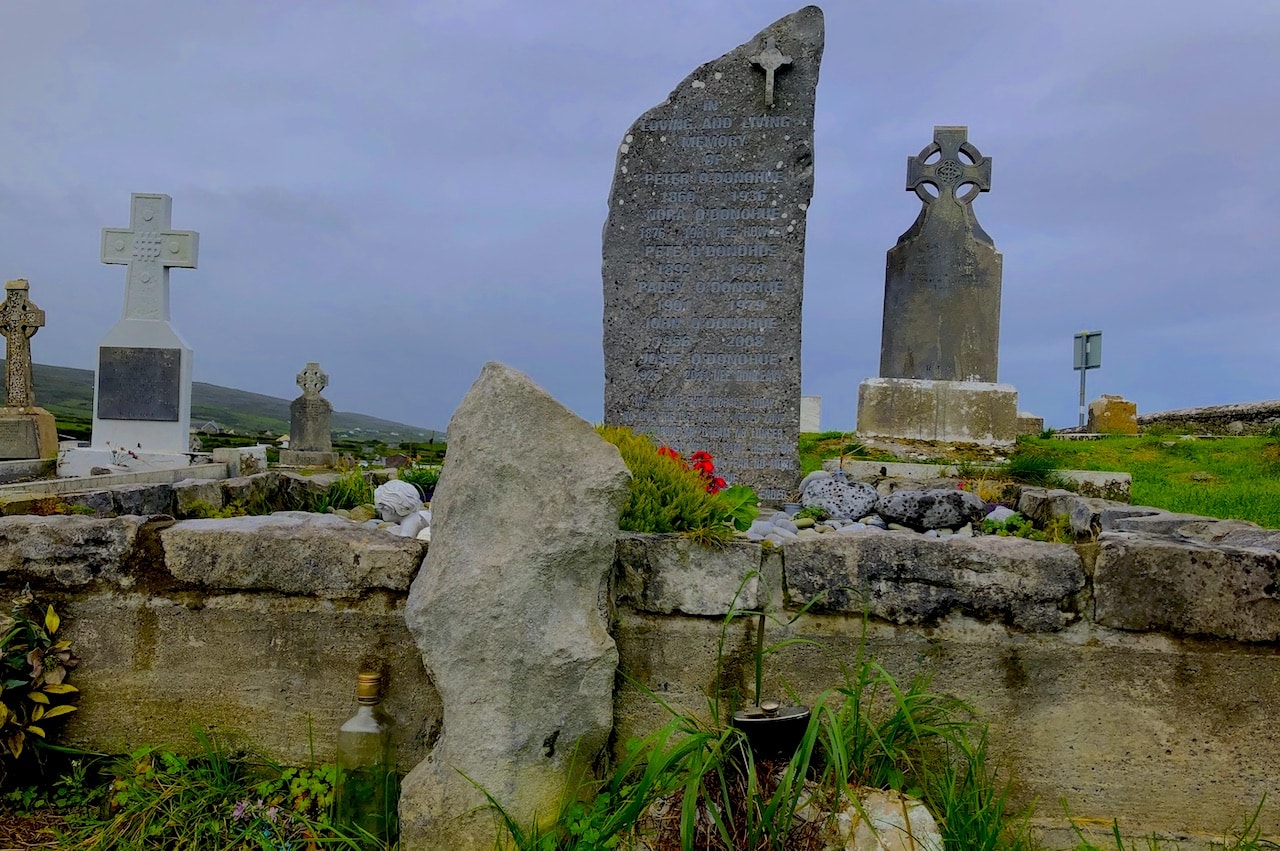
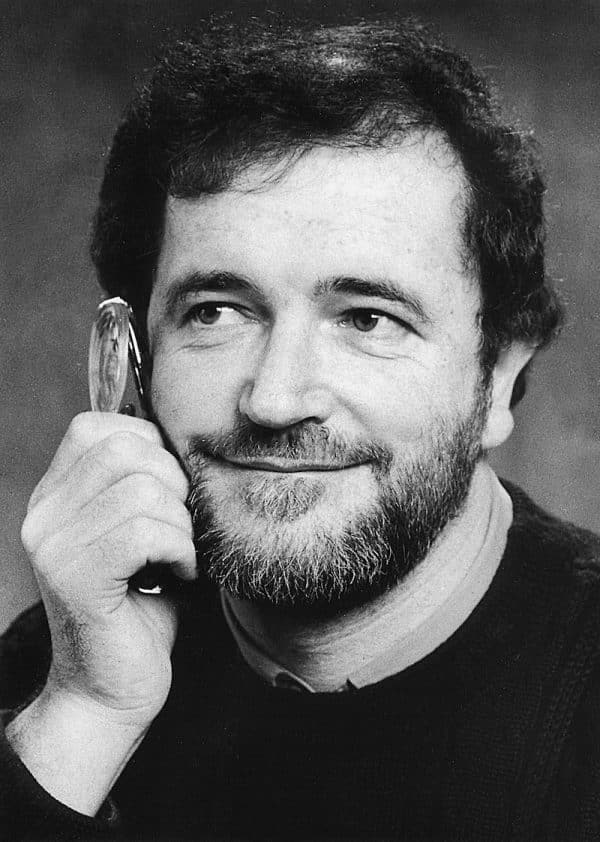
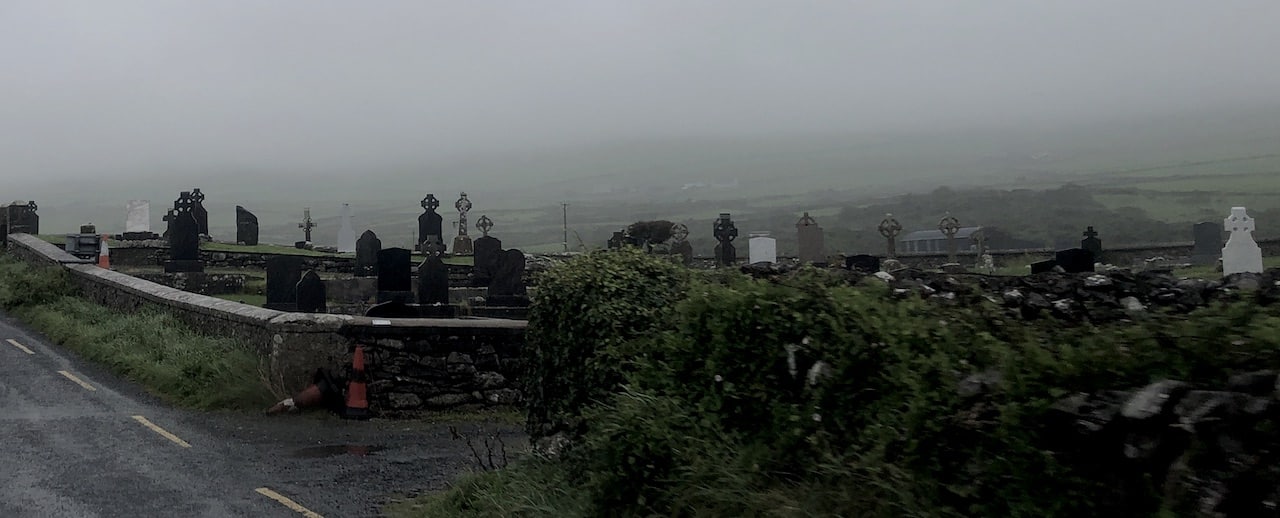
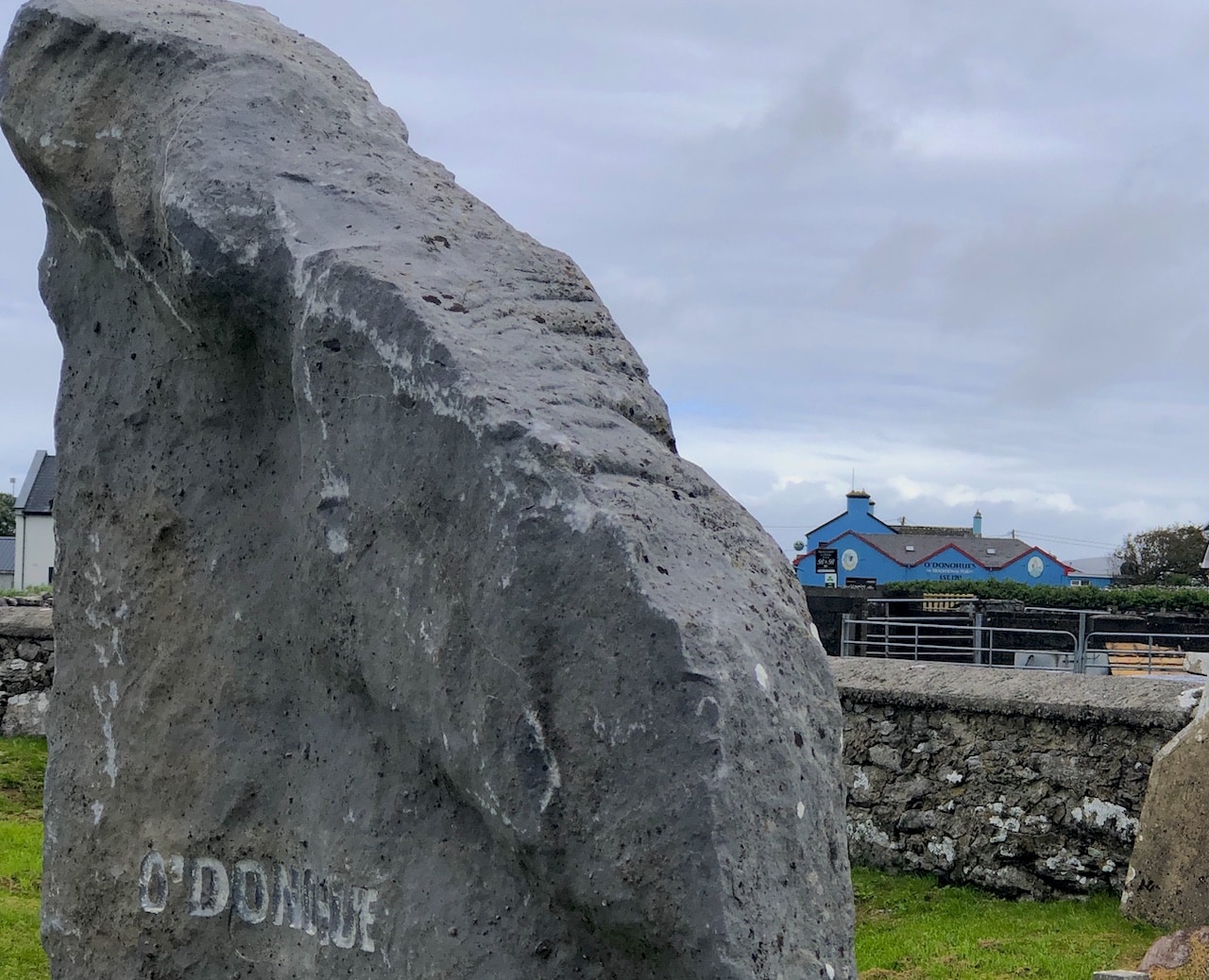
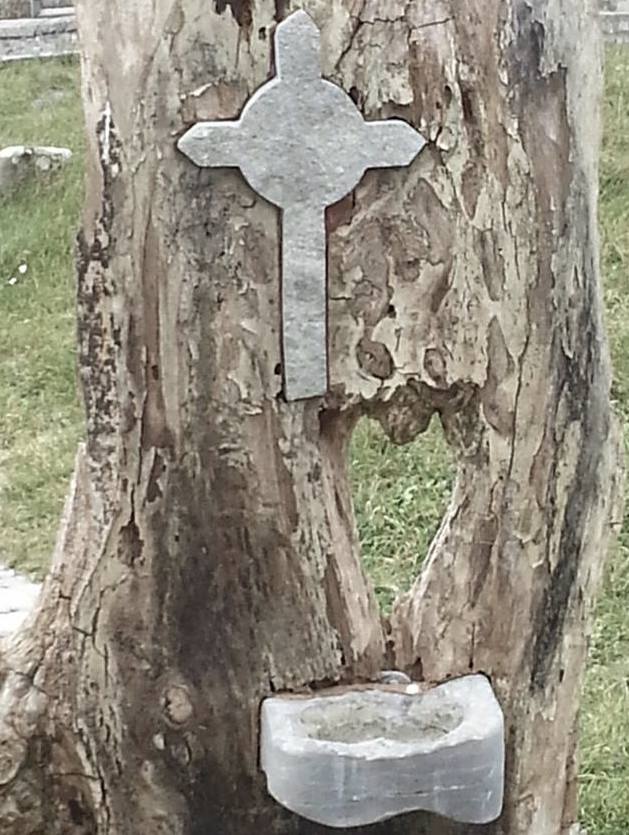

I agree with Bernard Canavan and “Nora”. And you Bernard are quite right about the “American New Age adherents he was catering for”. . Problem is that most Americans have a painful tendency to view aspects of our country and all this Celtic stuff through rose-coloured glasses. The complexities and contradictions of our society are way beyond their comprehension.
anu, no one is “hating” anyone, and there is a concept known as freee speech.
Thank you for this. John’s contribution to my peace of mind through his written and spoken words has been invaluable. A unique and beautiful voice.
I for one am grateful to know more about this man. His gentleness, humor and absolutely lyrical voice have been of great comfort as well as inspiration. My wife and I visited his grave and his voice will continue to enrich us all as long as memory allows. We are headed over to Clare and Connemara in a little more than three weeks time. A much needed retreat from so much darkness in recent times.
Dear Markus,
I feel so lucky to have stumbled on your series of pieces here. I’m making my first trip to Ireland in the coming week and hope to make a short, quiet journey to see some of these places you’re shared about here. I’m curious if you’ve done more work or writing on John and his life outside of this series? Thanks again. Jonathan
Thank you Markus for the extra flesh you have put on John O’Donohues bones, but can you please not refer to him as a Hegelian scholar, as that was a acolade he gave himself. You as a German must realise that five years study in Jena would not make one into a an Hegelian scholar; and certainly not someone capable of mastering and very difficult prose that an original theses on Hegel’s Phenomenology of Spirit required and having and then have published in German as new research. He never mentions Hegel in either of his own two books, but simply used it promote his reputation to the American New Age adherents he was catering for and making money out of with the tosh he was writing.
He was a conventional Irish parish priest at a time when they were turing away from abusing children to having normal sex with women, but realising that his bread was being buttered by the Catholic Irelands hierarchy by preaching anti-human nonsense. He got a free house, a car in the drive. and became the parish manager on all important events in the community and the in lives of the individuals in the community. He never wanted to give up the priesthood with such benefits, but yet he admitted he was never celibate during any poriod in his religious life. They all the clerics were peddling snake oil: when Pope Paul came to Ireland, he was assisted on the stage in Galway by two Irish clerics: Bishop Casey and the singing priest, Fr Cleary, who were both ‘Fr’s’ in the family sense rather than in the spiritual sense – the Pope himself was carrying on an epistolary relationship with a married Polish woman. Is it any wonder that the churches of Ireland were emptying and remain empty?
There was nothing ‘spiritual’ about any of this Celtic stuff: it was just men trying to have their cake and eat it. When O’Donohue found a female partner who would answer his human man’s need for love and sex he took it – and who wouldn’t. But he could have the prestige of the priesthood so he never laicised and on top of that came the megabucks – what was there not to like? But it wasnt honest. It wasnt even literature. He couldn’t even write his will so the the woman he loved would have security if anything happened, because he was working with smoke and mirrors sentences. It sickens me to read the stuff.
@Markus Bäuchle Please remove these hateful comments about John O’Donohue. I’ll never understand why people spend energy hating people.
The truth is better than hypocrisy by a mile , go raibh míle maith agat .